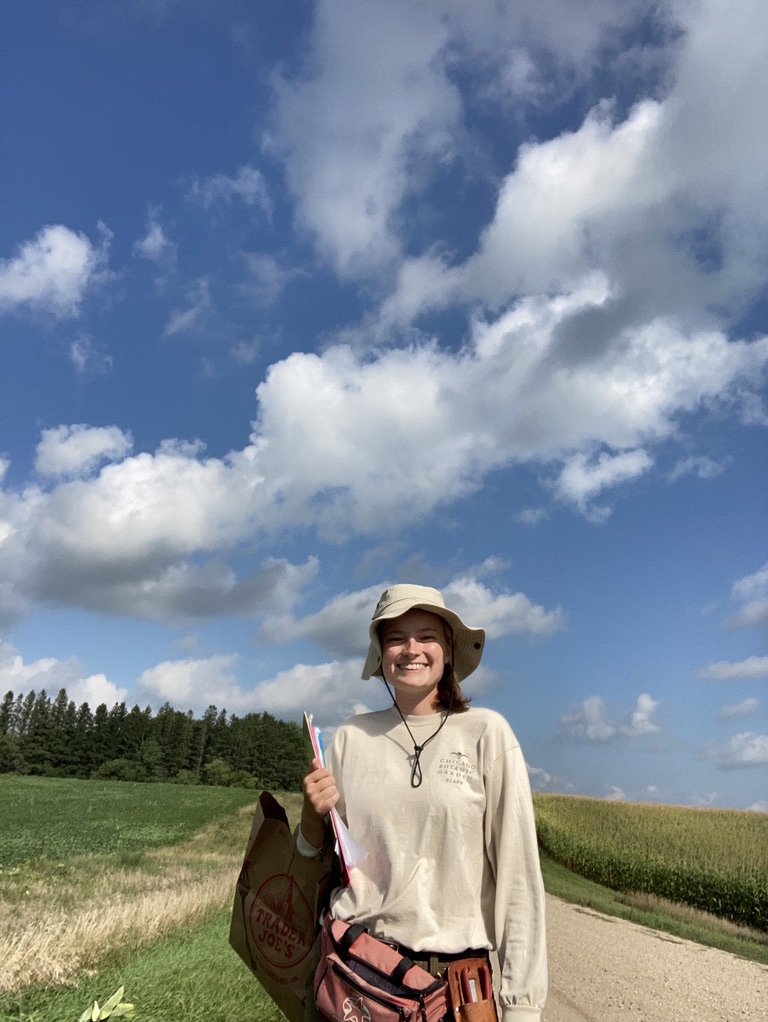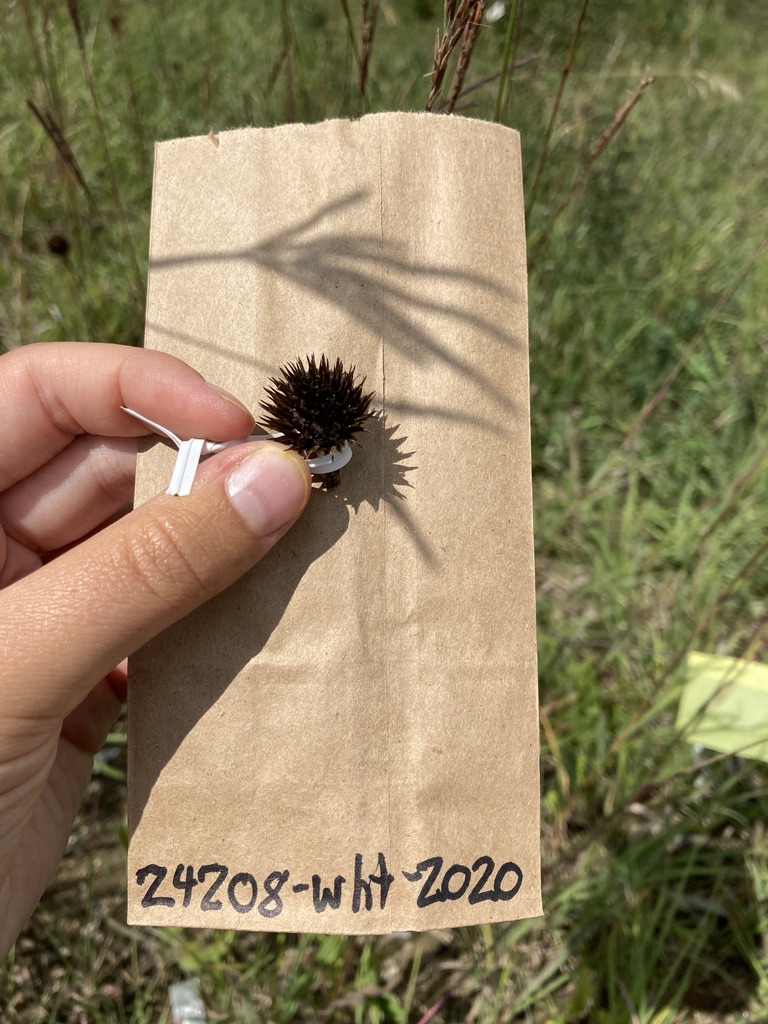Monitoring reproductive fitness in the remnant populations is a staple Team Echinacea summer activity. Understanding the reproductive success of plants in remnant populations provides insight to a vital demographic rate contributing to the persistence (or decline) of remnant populations in fragmented environments.
In the summer of 2020, we harvested 304 seeds heads from 29 populations (AAN, AAS, ALF-E, ALF-W, BTG, DOG, EELR, ERI, ETH, GC, LCE, LCW, NESS, NNWLF, NRRX, NWLF, ON27, RIN, RIS, RRX, SAP, SGC, TH, TOWER, WAA, YOH). These are the same populations where we measured flowering phenology. We randomly selected 15 heads from each population, if a population did not have 15 heads, we harvested all of the heads. We harvested heads from the following populations.
These heads are currently in the CBG lab and soon we will start the process of removing the achenes and assessing seed set. We are unsure how exactly we will assess seed set because the x-ray at the Chicago Botanic Garden isn’t working now. We may weigh the seeds.


In the spring, we plan on burning some of these remnants and also collecting heads next fall. Estimates of seed set from these heads will serve as a baseline for comparing seed set before and after a burn. We will learn how fire affects reproductive success in small prairie remnants.
Start year: 1996
Location: Roadsides, railroad rights of way, and nature preserves in and around Solem Township, MN
Overlaps with: Phenology in the Remnants
Data/Materials collected: 304 seed heads were collected, these are currently at The Chicago Botanic Garden along with the paper data sheets. These data sheets need to be scanned, double-entered, and checked.
Products: We will compile seed set data from 2020 into a dataset with seed set data from previous years.
You can read more about reproductive fitness in remnants, as well as links to previous flog entries mentioning the experiment, on the background page for this experiment.

Leave a Reply